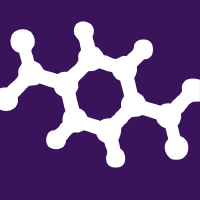Topic Menu
► Topic MenuTopic Editors

Functional Surface Modifications of Nanostructures
Topic Information
Dear Colleagues,
Nanostructures (comprising nanoparticles, nanoclusters, nanocrystals, nanorods, nanostars, etc.) are currently in the focus of many research groups mainly due to their unique features which are not accessible, nor possible to achieve in bulk materials containing the same chemical elements. The surface of nanostructures is a very important aspect, and particularly in nanoobjects of units of nanometers in diameter, the most dominant part. In general, surface represents an interface between the inner part of nanostructures and surrounding environment. In many cases, the surface dictates the resulting characteristics of nanostructures. It is thus no wonder that many researchers are examining the possibilities and limitations of nanostructure surface modifications. Functional surface modification of nanostructure surfaces can lead to improved properties and, consequently, improved applicability of the nanostructures. Functional surface modification can be performed either in the course of nanostructure formation, i.e., in situ modification, or later on, after nanostructure synthesis, i.e., post-synthetic modification. In fact, even the careful design of the synthetic procedure can be a way to achieve a controlled structure or composition at the nanomaterial surface. The major aim of this Topic is to collect original and innovative reports (original research papers, communications, or reviews) and developments dealing with functional modifications of nanostructure surface(s) leading to improved characteristics of nanostructures, such as better solubility, higher stability, reduced toxicity, enlarged applicability, etc.
Dr. Karolína Šišková
Dr. Nekane Guarrotxena
Topic Editors
Keywords
- surface modification for improved characteristics
- nanomaterial surface
- surface properties of nano-objects
- functional nanomaterials
- coating of nanomaterials
- design of nanomaterial synthesis
- in situ surface modifications of nanomaterials
- post-synthetic surface modifications of nanomaterials
Participating Journals
| Journal Name | Impact Factor | CiteScore | Launched Year | First Decision (median) | APC |
|---|---|---|---|---|---|

International Journal of Molecular Sciences
|
4.9 | 9.0 | 2000 | 20.5 Days | CHF 2900 |

Materials
|
3.2 | 6.4 | 2008 | 15.2 Days | CHF 2600 |

Nanomanufacturing
|
- | - | 2021 | 39.8 Days | CHF 1000 |

Nanomaterials
|
4.3 | 9.2 | 2010 | 15.4 Days | CHF 2400 |

Polymers
|
4.9 | 9.7 | 2009 | 14 Days | CHF 2700 |

Preprints.org is a multidisciplinary platform offering a preprint service designed to facilitate the early sharing of your research. It supports and empowers your research journey from the very beginning.
MDPI Topics is collaborating with Preprints.org and has established a direct connection between MDPI journals and the platform. Authors are encouraged to take advantage of this opportunity by posting their preprints at Preprints.org prior to publication:
- Share your research immediately: disseminate your ideas prior to publication and establish priority for your work.
- Safeguard your intellectual contribution: Protect your ideas with a time-stamped preprint that serves as proof of your research timeline.
- Boost visibility and impact: Increase the reach and influence of your research by making it accessible to a global audience.
- Gain early feedback: Receive valuable input and insights from peers before submitting to a journal.
- Ensure broad indexing: Web of Science (Preprint Citation Index), Google Scholar, Crossref, SHARE, PrePubMed, Scilit and Europe PMC.

